



Any comments to Philippe Serbruyns: or twitter @phiser678.
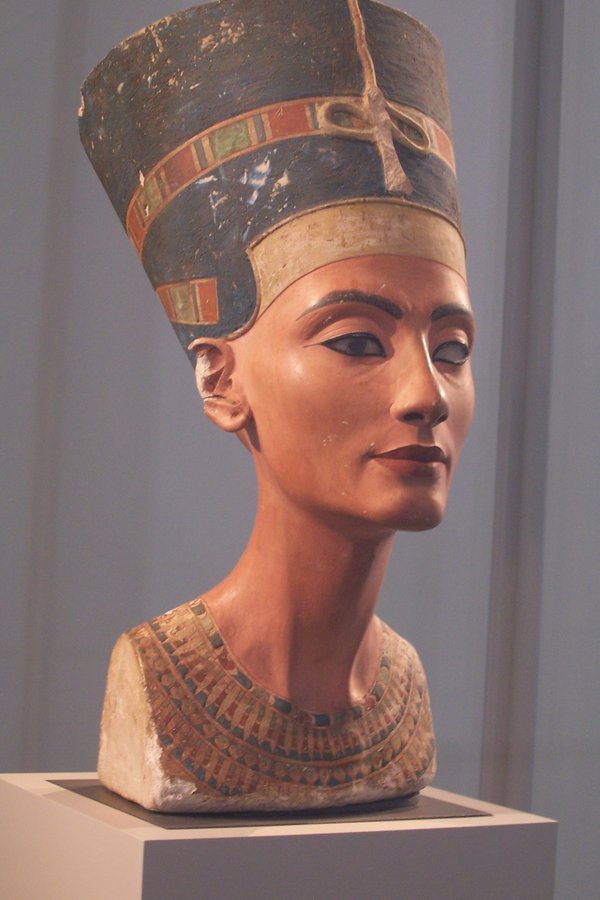
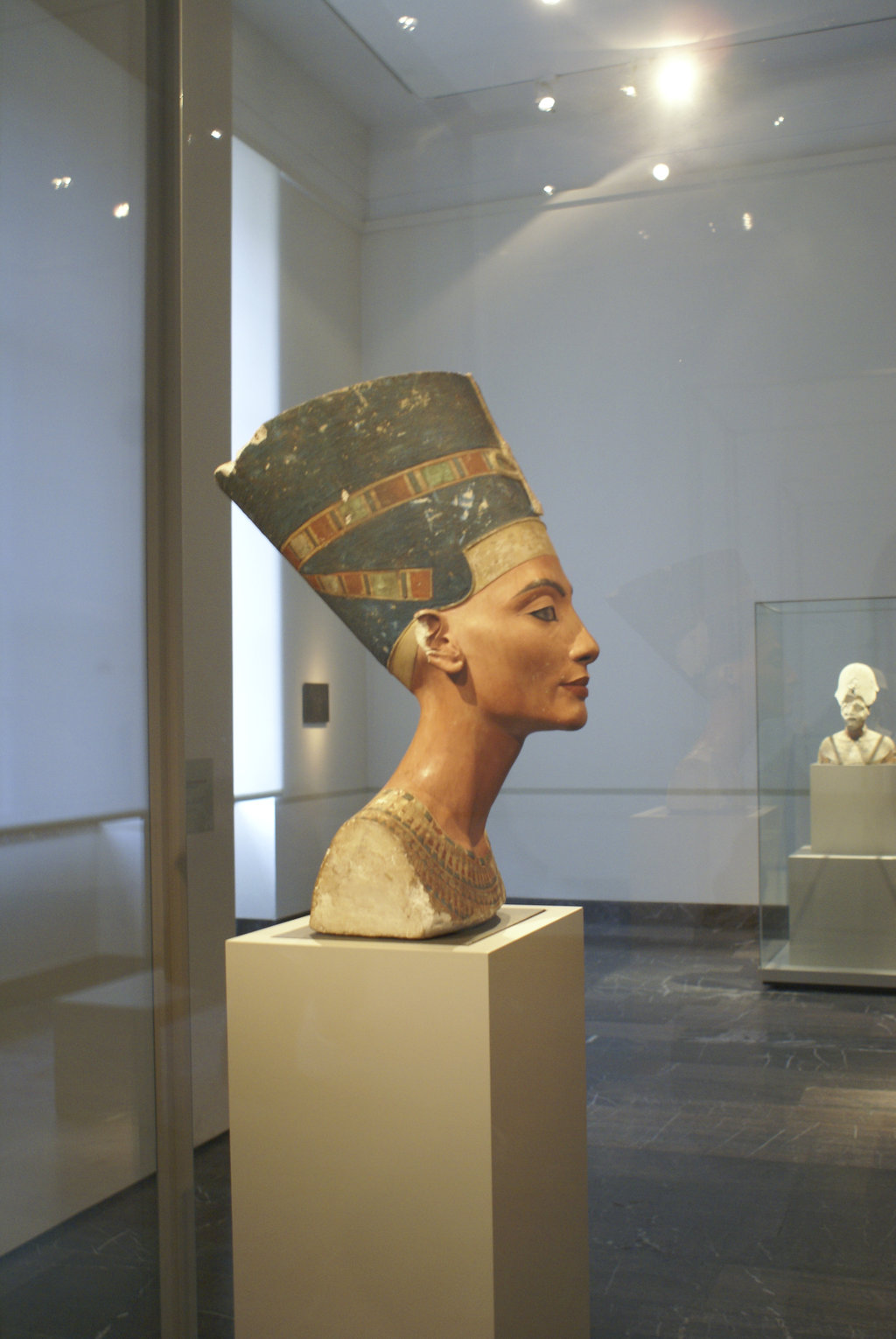
In 2016 two artists Nora Al-Badri and Jan Nikolai Nell claimed they had secretly 3D scanned the bust of Nefertiti with a battery operated handheld Kinect they smuggled in the Neues Museum in Berlin.
If you look at the 3D scan you immediately are impressed by the quality. This is not possible with only one handheld Kinect! 3D scans made by a Kinect are very rough. In my department there are some researchers of looking what is possible with eight similar SoftKinetic DepthSense DS325 time-of-flight depth-sensing but still low resolution camera's. We will see later what they can accomplish with it!
As I was looking up anything about the scans it seems this was a hoax indeed. To the contrary, it seems they've hacked the computers of the Museum and released the 3D scans into the public domain.
I was very interested in printing it, since we have an Ultimaker 3 in our department for prototyping and experiments. It seems it not easy at all to have a good print of the bust even this an excellent quality 3D scan!
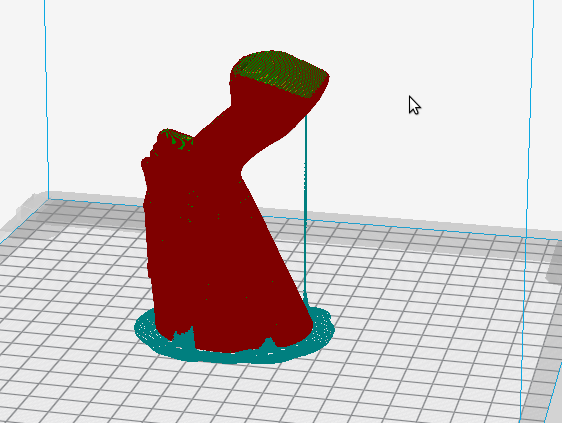
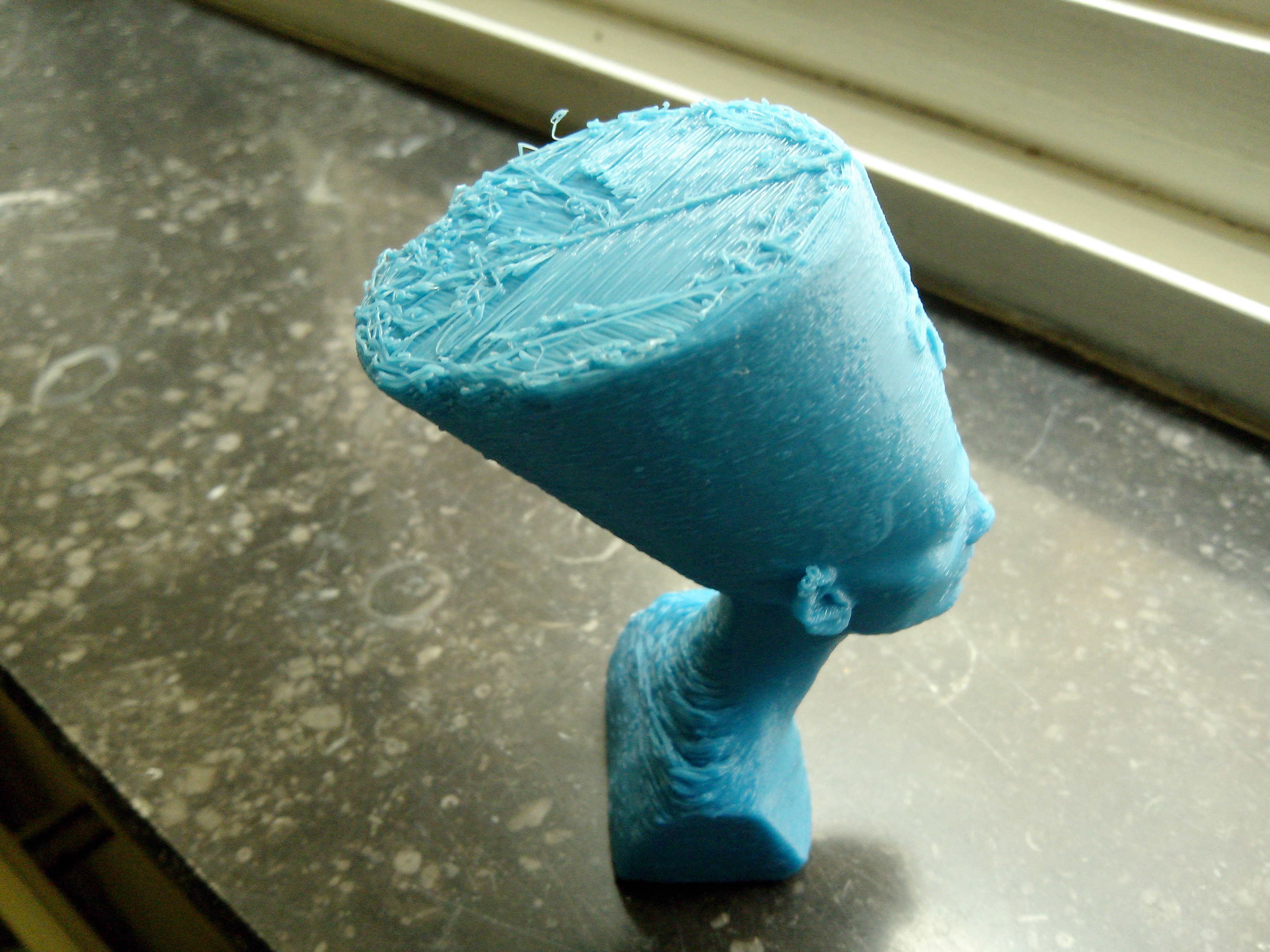
The first I tried to print a 20% reduction of the bust upside down, so the head resting on the hat. It was indeed rather a good print, but the top of the hat is not 100% flat and contains garbage of the support it printed (support is needed, since you cannot just print overhanging structures). Also the neck was wrinckled due to leaving out the support as it would altogether mess up the neck. The inclination (slope) was a bit too much for printing it normal.
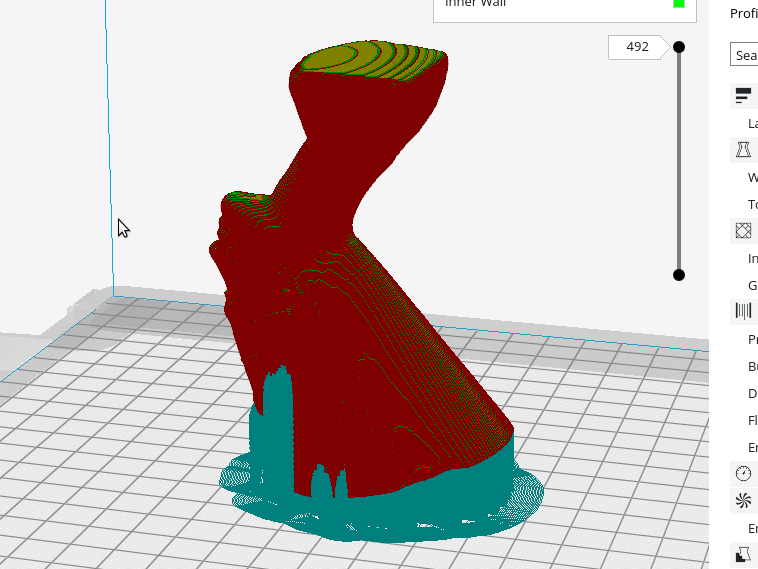
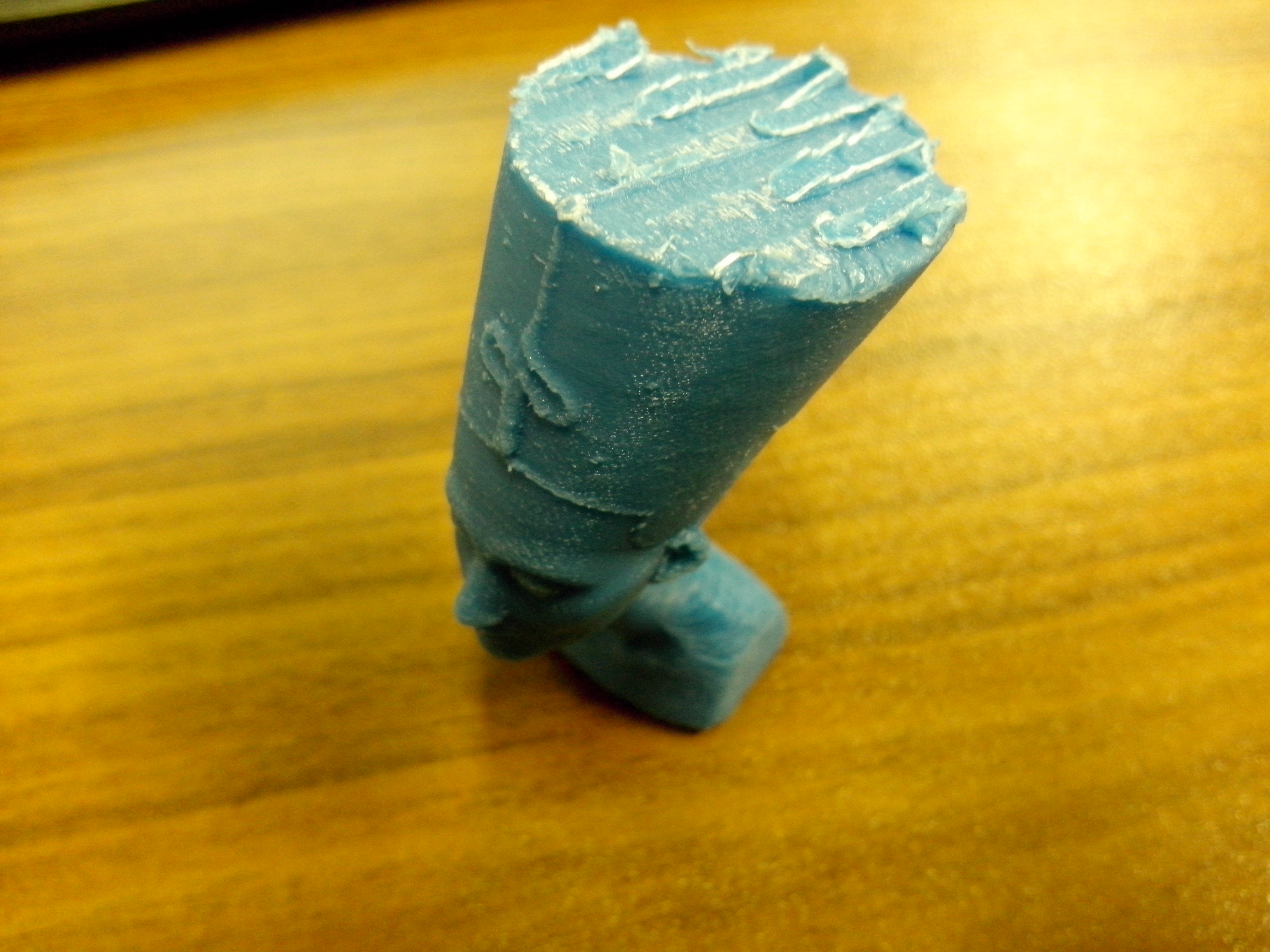
The next I tried was tilting the head a bit more to make it easier to print the neck because it would lean more vertical. Now the neck was better, but the top of the hat was totaly wrecked caused by even more support.
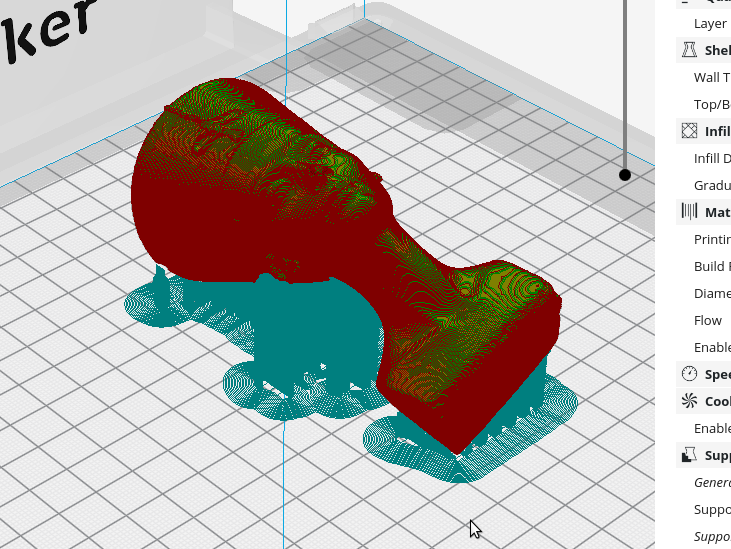
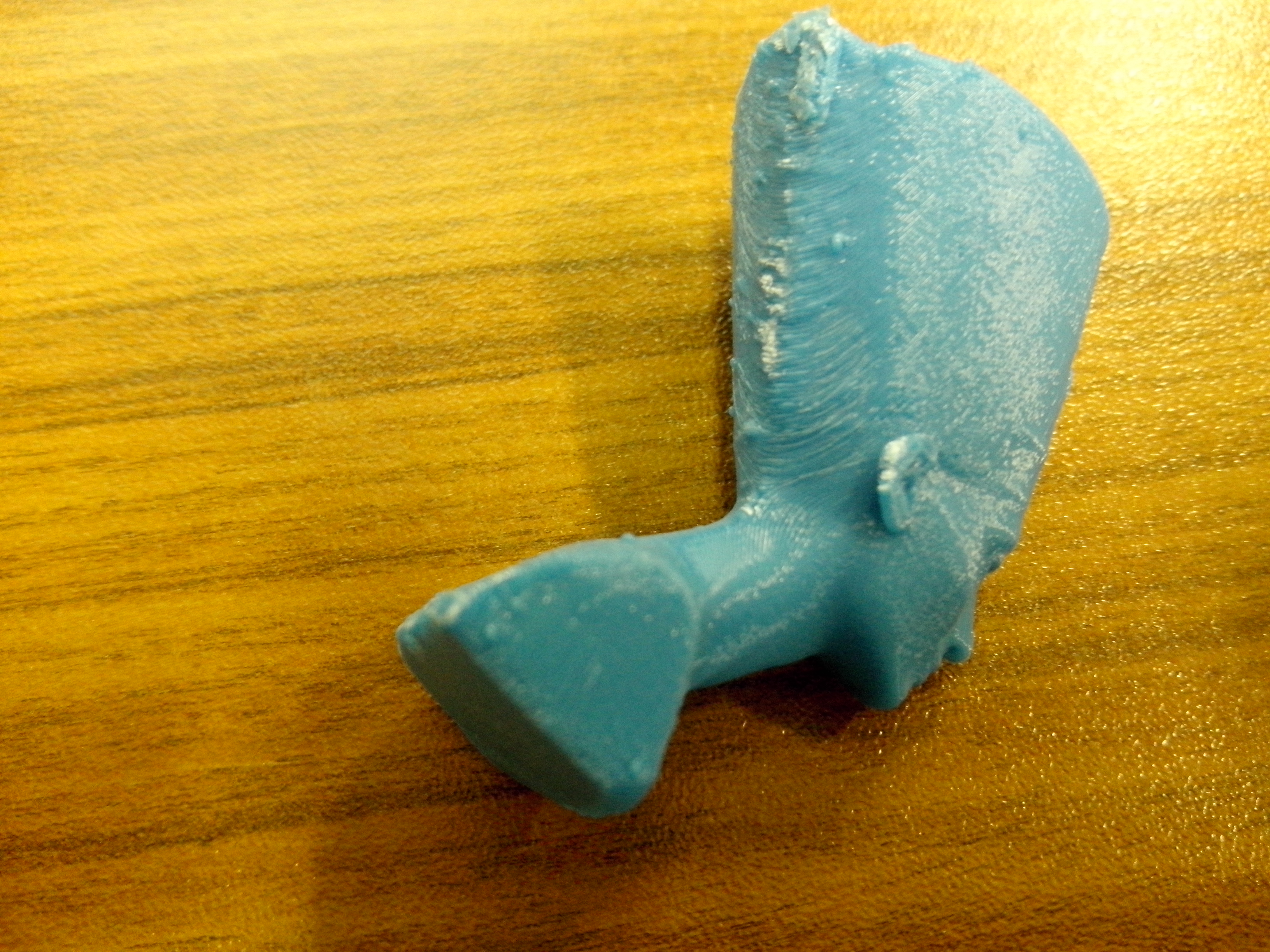
Okay, putting the head to rest and tilting a bit the nose to the right. This was indeed one of the better prints. Only the support messed up the back a bit, and there was a little hole in her nose and left eyebrow. This is caused by the default printing speed as it is set too high for an end small tip of the head.
I wouldn't give up yet. Okay let's cut it in three separate pieces, and then glue them together.
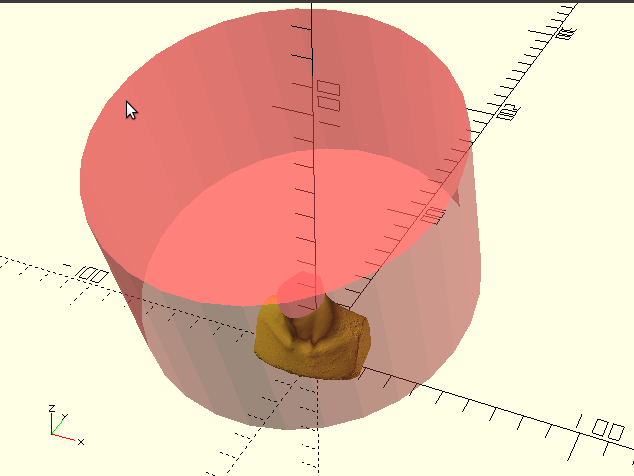
For cutting we use the open source tool OpenSCAD. We import the .stl and put a big cylinder above it. We then subtract the cylinder from the bust.
translate([0,0,49])
difference() {
scale([.2,.2,.2]) import("UM3_Nefertiti.stl", convexity=3);
translate([0,10,-55]) rotate([19,0,0]) translate([0,0,47]) cylinder(70,60,60);
}I highlighted the cylinder to show how it works.
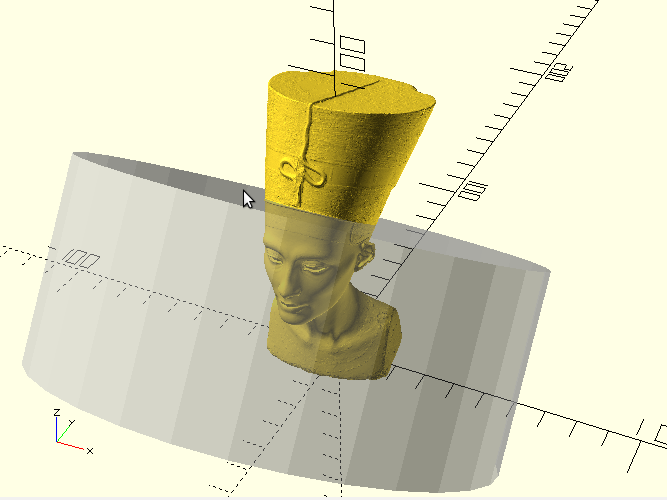
We put a big cylinder under the hat now and subtract the two.
translate([0,0,49])
difference() {
scale([.2,.2,.2]) import("UM3_Nefertiti.stl", convexity=3);
translate([0,-15,14.5]) rotate([-35+180,0,0]) cylinder(60,70,70);
}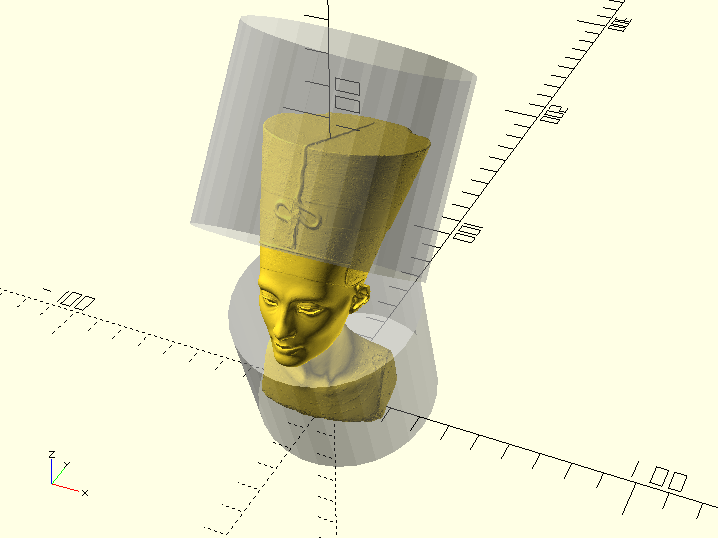
We combine the the cuts from above now.
translate([0,0,49])
difference() {
scale([.2,.2,.2]) import("UM3_Nefertiti.stl", convexity=3);
translate([0,-15,14.5]) rotate([-35,0,0]) cylinder(60,35,35);
translate([0,10,-55]) rotate([19,0,0]) cylinder(47,30,30);
}It turns out this was not a 100% solution also. The cut neck of the two halves where not 100% flat anymore, since it was the end of the print but it shricked and deformed the cut. The top of the separated hat was now 100% perfect, but sticking the hat and head, was also not 100%. Anyway, I glued them together with tranparent contact glue, filled up the grooves with wood glue as a filler, and sparyed the head with some leftover chrome wheel paint, which in fact is a very thick paint as it turned out. This is the final result.
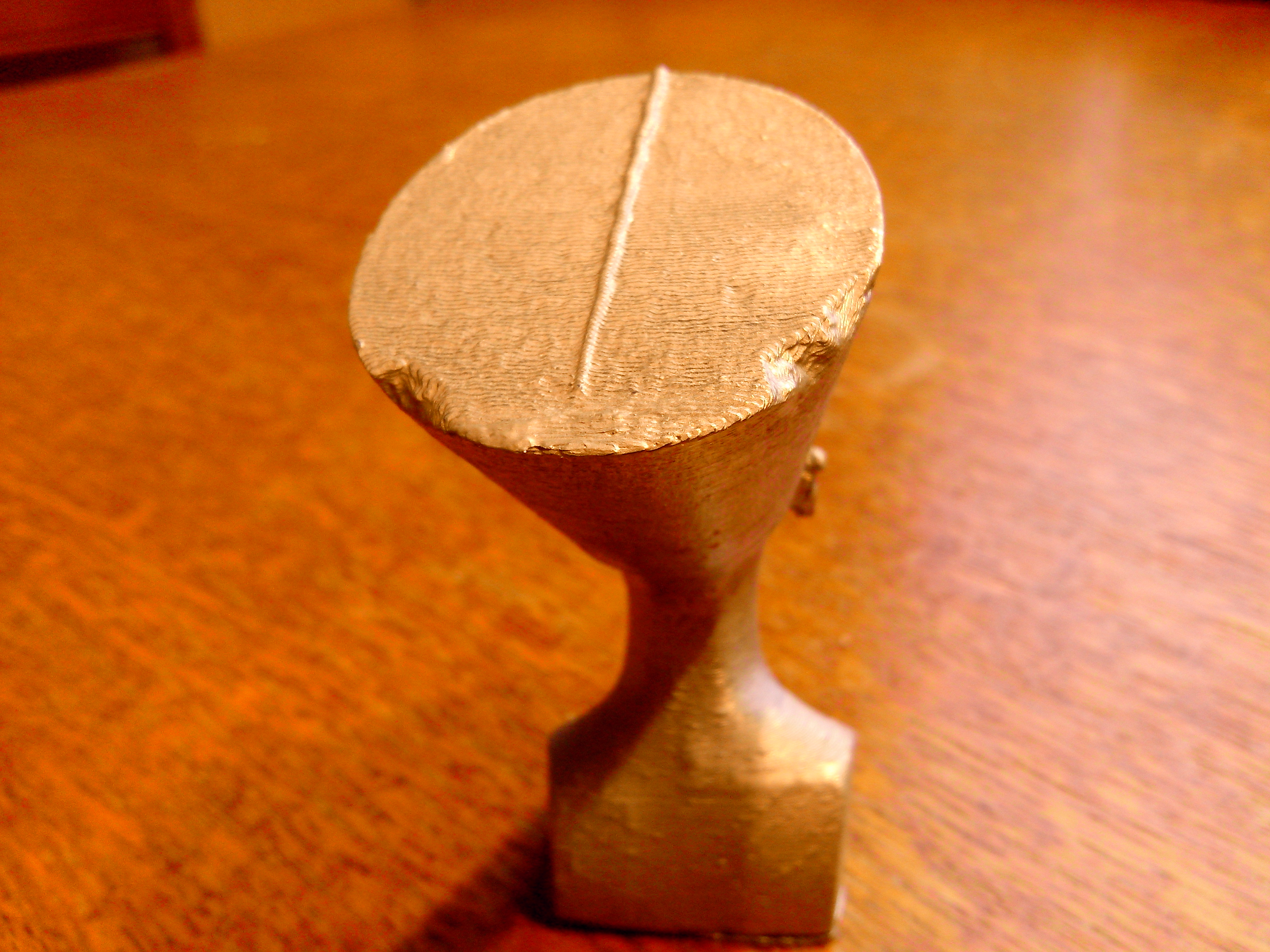
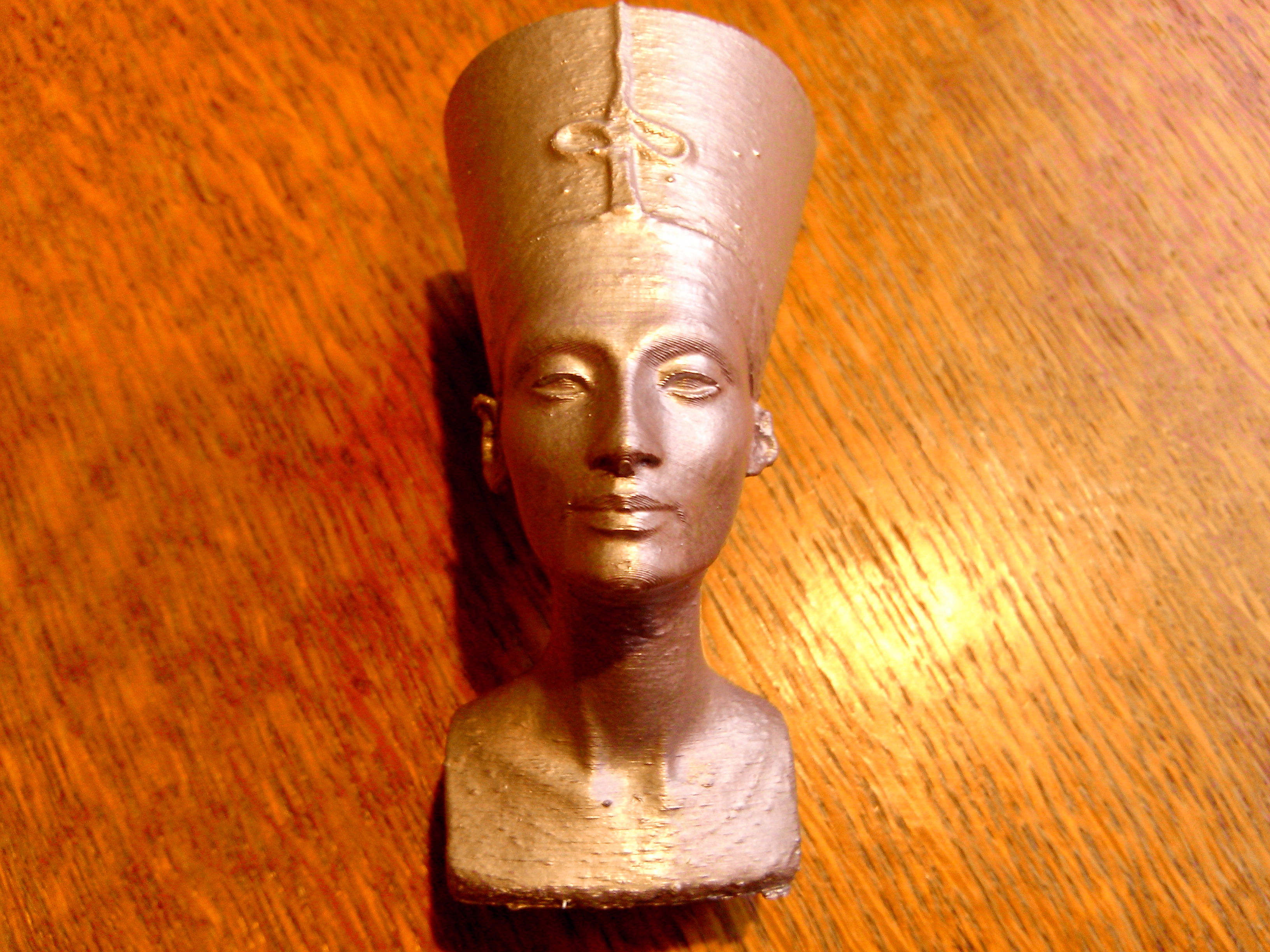
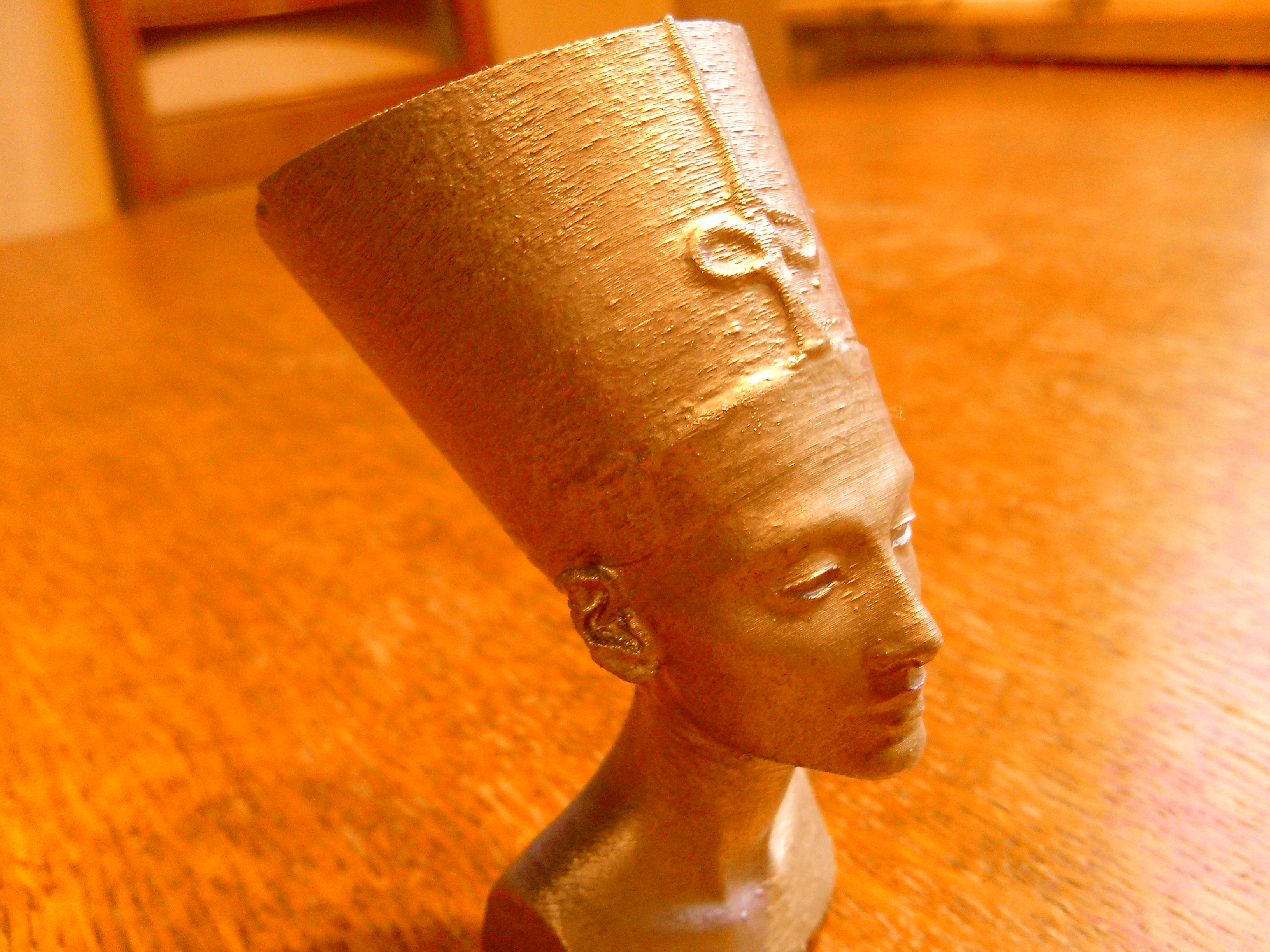
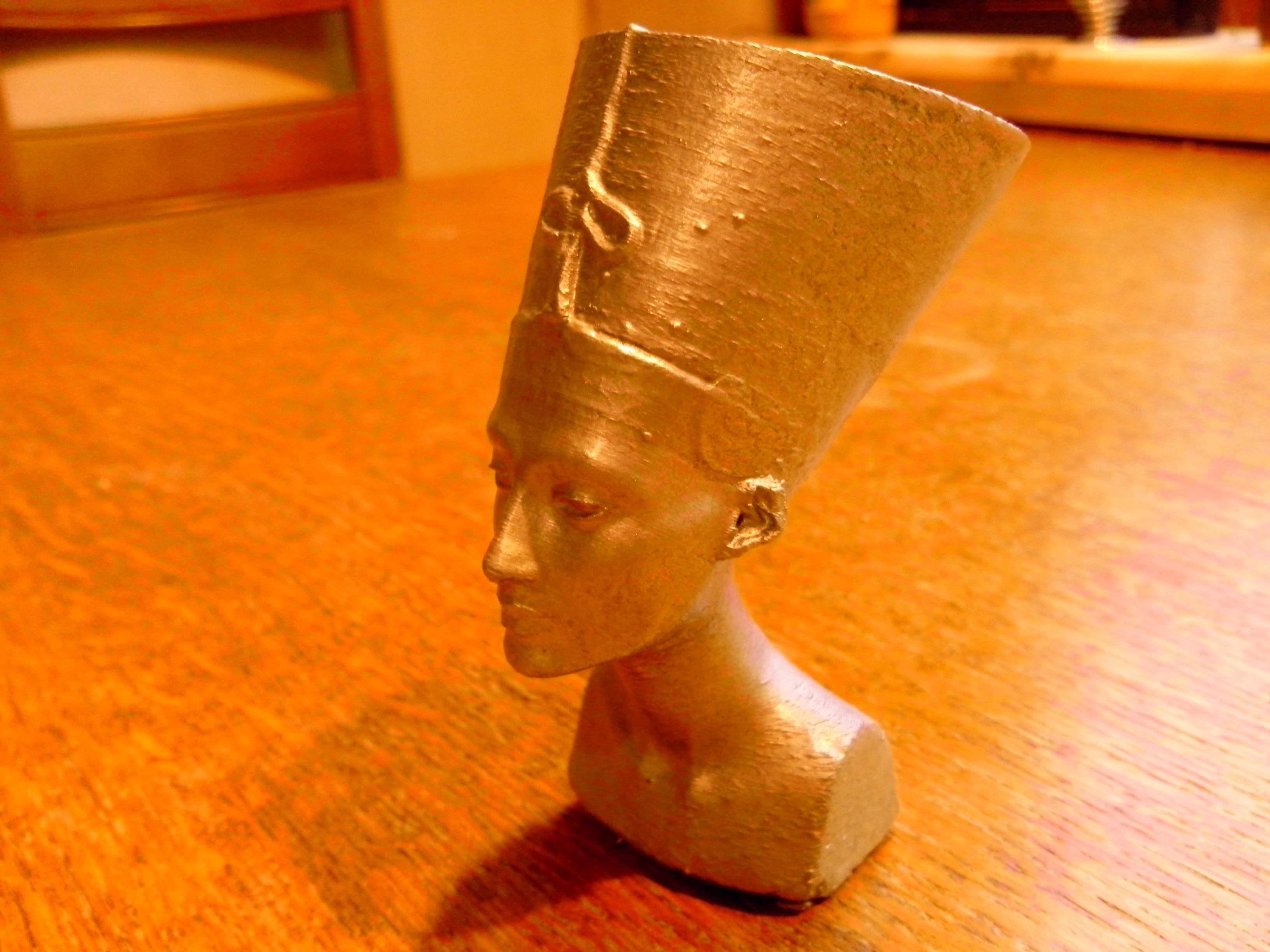
I really like to thank whoever made the excellent 3D scan and also Nora Al-Badri and Jan Nikolai Nell for releasing it into to the public so everybody can now enjoy this magnificient 5500 year old crafted masterpiece!!! It was indeed a good exercise to learn about 3D printing by means of the artifact of the bust of Nefertiti.